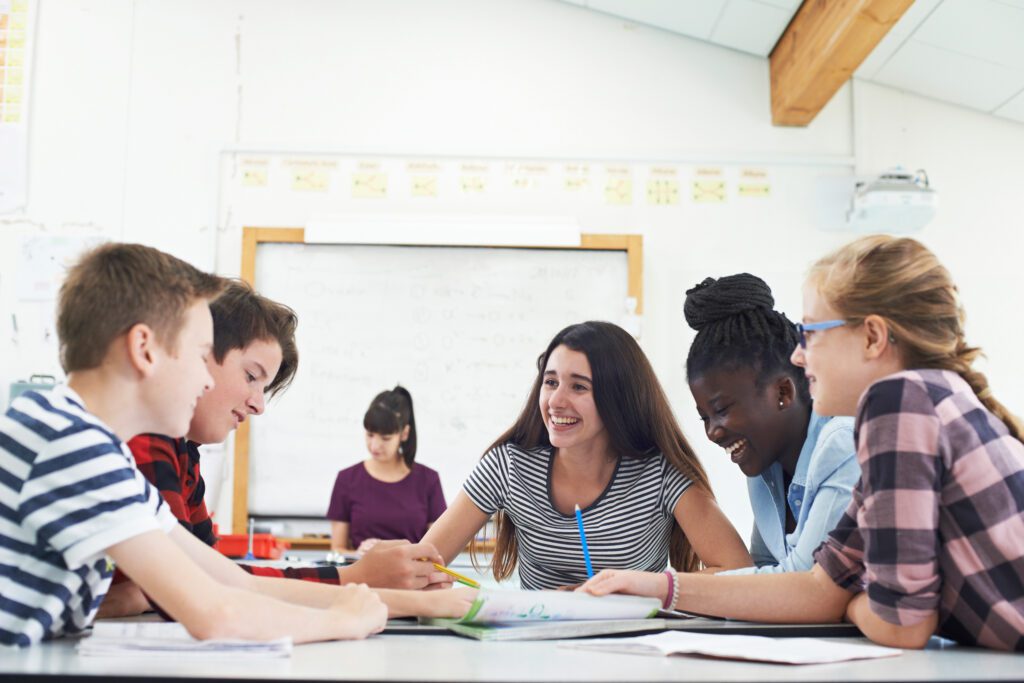Computer Science Standards
CSTA K-12 CS Standards
- Computing Explorations: Level 2 CSTA standards
- Student-Centered Computing Foundations: Level 3A CSTA standards
- SCC Advanced Placement Computer Science Principles: College Board APCSP Standards
Georgia Standards of Excellence
- Computing Explorations:
- Foundations of Programming (PDF)
- Foundations of Interactive Design (PDF)
- Student-Centered Computing Foundations: Introduction to Software Technology
- SCC Advanced Placement Computer Science Principles: College Board APCSP Standards

Design
Students create “Design Visions” for each digital product. The design vision defines the audience for the product, identifies the goal that the product is meant to achieve and the resources necessary to achieve that goal, and specifies why the product is relevant to that audience. In the process, students grapple with issues of stereotypes, the implications of how problems are represented, and who gets included/excluded when audiences and products are being considered.
Problem/Product Decomposition
Students move from their Design Vision to creating a storyboard, and then to translating their story or narrative into code. Each step requires that students break the problem or product into smaller subproblems that they can tackle individually. In addition, each steps requires different set of skills (research, visual representation, storytelling, coding) which provides students with multiple ways of thinking and representing their problems.
Pattern Recognition
Student-Centered Computing explicitly addresses pattern recognition in various forms. For example, when learning to code using the EarSketch platform, students identify musical patterns during unplugged activities, and then translate these musical patterns into coding patterns to create their musical compositions.
Algorithms/ Programming/
Debugging
Student-Centered Computing explicitly addresses pattern recognition in various forms. For example, when learning to code using the EarUsing the browser-based EarSketch platform, students learn to code in Python or JavaScript using a multi-track digital audio workstation. As students compose unique music, they manipulate loops, compose beats, remix sounds, apply effects, and debug their products. They also use mobile app design programs such as Thunkable to create games while learning about events, conditionals, and logical operators.Sketch platform, students identify musical patterns during unplugged activities, and then translate these musical patterns into coding patterns to create their musical compositions.
Abstraction
Students design a game related to their focal problem that engages the user, highlights important aspect(s) of the problem, and represents the problem without potential bias or deficit perspectives. Students also engage in procedural abstractions in EarSketch in APCSP and in Thunkable in the other SCC courses. In EarSketch they abstract musical form using Javascript. In Thunkable they analyze existing block code snippets from games they have previously explored and modify them to satisfy their own game’s design vision, user interactions, and data requirements.
Networks and the Internet
Students investigate the nature of the internet and networks as they post their webpages. They “take a look under the hood” of the computer system and computing networks, examining how their inputs become a web page on Google’s server, and how their web page on Google’s server becomes displayed onto their client computer. They also explore wireless networks, evaluate computer systems and LAN topologies, and networking trends and issues.
Impacts of Computing and the Internet
Students in Student-Centered Computing explore the impacts of computing as they research how search engines select and present information, how different engines have the power to influence culture around them, and the differences between reliable and speculative information on the web. They also explore the social impact of computer games, and learn how to advocate for an issue and engage community and elected leaders to raise awareness and support for the issue.
